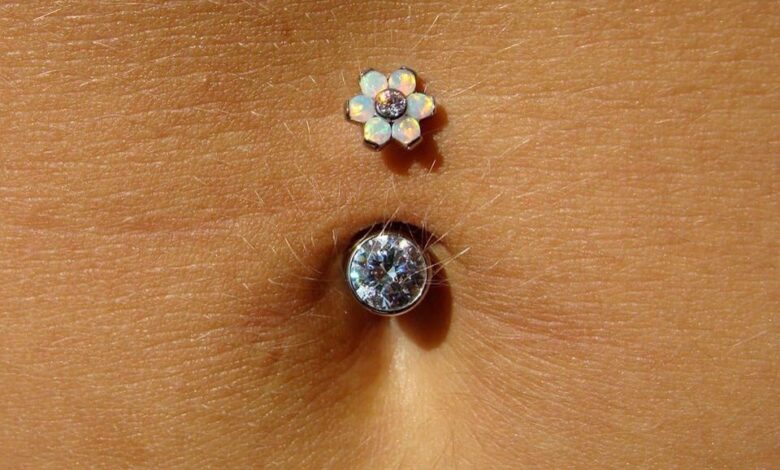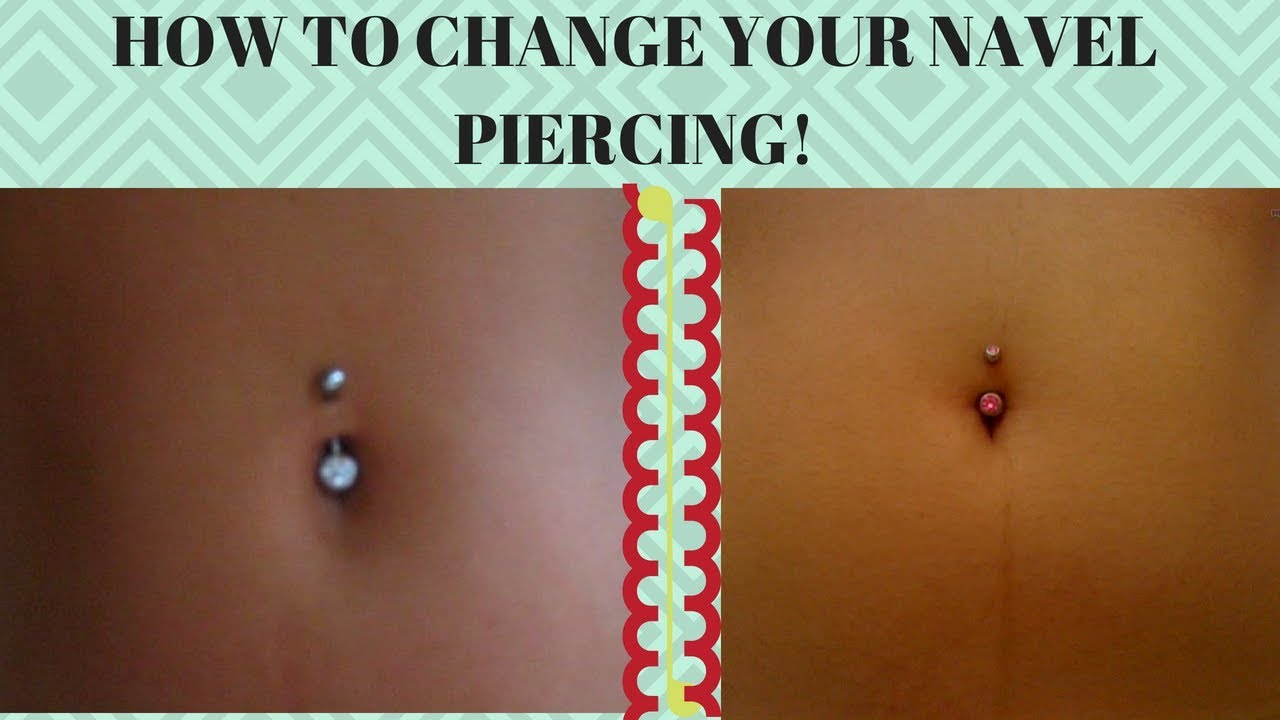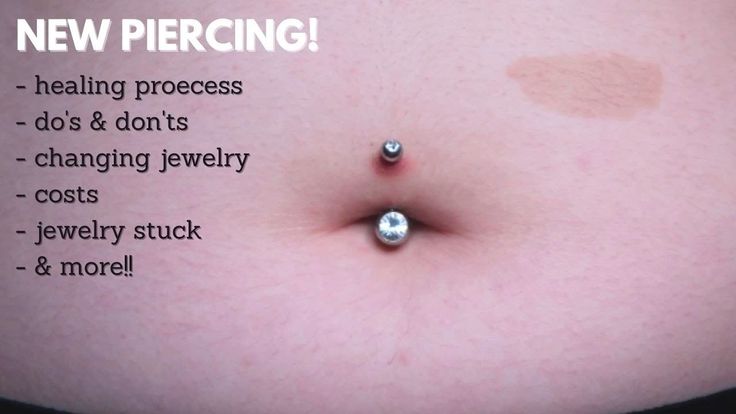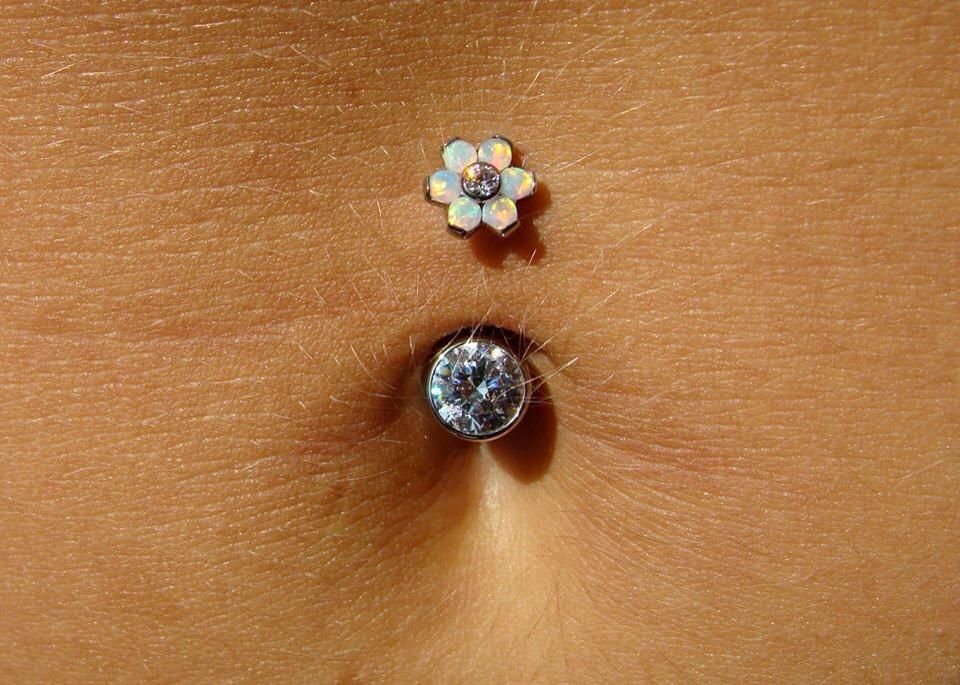
Belly Piercing Effects Know Before You Go
Effects of getting belly piercing you should know beforehand – Belly Piercing Effects: Know Before You Go. So, you’re thinking about getting a belly button piercing? It’s a super popular choice, offering a subtle yet striking way to express yourself. But before you jump in, let’s talk about the realities – the good, the bad, and the downright ouch. This isn’t just about the initial prick; it’s about the entire journey, from the healing process and potential complications to the long-term commitment and cost.
Let’s dive into everything you need to know to make an informed decision.
We’ll cover the pain levels you can expect, the healing timeline, and how to choose a reputable piercer. We’ll also explore potential complications like infection and rejection, and discuss the lifestyle adjustments you’ll need to make during the healing phase. Think of this as your ultimate guide to navigating the world of belly button piercings, ensuring you’re fully prepared for what lies ahead.
Pain and Discomfort: Effects Of Getting Belly Piercing You Should Know Beforehand
Getting a belly button piercing is a relatively common procedure, but it’s important to understand the potential for pain and discomfort involved. The experience is subjective, varying significantly from person to person, influenced by individual pain tolerance, the piercer’s technique, and aftercare practices. This section will delve into the specifics of pain associated with navel piercings.The pain during a belly button piercing is often described as a sharp, pinching sensation that lasts only a few seconds.
Many people compare it to a quick bee sting or a minor paper cut. Immediately afterward, there’s a dull ache that gradually subsides over the next few hours. The intensity of this initial pain can vary, with some individuals reporting minimal discomfort while others experience more intense pain.
Factors Influencing Pain Levels
Several factors contribute to the overall pain experience. A person’s pain tolerance is a major factor; some individuals naturally have higher thresholds for pain than others. The piercer’s skill and technique also play a significant role. An experienced piercer uses sterile equipment and precise techniques, minimizing trauma and discomfort. The location of the piercing within the navel itself can also affect pain levels; some areas are more sensitive than others.
Finally, anxiety and stress before the procedure can heighten pain perception. A relaxed state of mind can often minimize discomfort.
Pain Relief Methods
Various pain relief methods can be employed before, during, and after the piercing. Before the piercing, deep breathing exercises and relaxation techniques can help manage anxiety and reduce pain sensitivity. Some individuals find that applying a topical anesthetic cream, like a numbing cream containing lidocaine, to the area 30-60 minutes prior to the piercing can lessen the initial sting.
During the piercing, the speed and precision of the piercer are key; a quick, clean pierce minimizes discomfort. After the piercing, over-the-counter pain relievers like ibuprofen or acetaminophen can help manage any lingering soreness or inflammation. Applying ice packs to the area can also reduce swelling and pain.
Pain Comparison with Other Piercings, Effects of getting belly piercing you should know beforehand
Comparing the pain of a belly button piercing to other common piercings is subjective. Generally, it’s considered to be in the mid-range of pain levels. Many people report that it’s less painful than piercings in more sensitive areas, such as nipples or genitals, but more painful than earlobe piercings. The pain associated with cartilage piercings, such as those in the nose or ear, is often considered more intense and longer-lasting than a belly button piercing due to the denser tissue.
However, it is important to note that these are subjective experiences and individual pain tolerance greatly influences perception.
Healing Process and Potential Complications
Getting a belly button piercing is a commitment that extends beyond the initial excitement. Understanding the healing process and potential complications is crucial for a positive outcome. This involves knowing what to expect during the various stages of healing, recognizing warning signs of problems, and diligently following aftercare instructions. Proper care significantly reduces the risk of complications and ensures a smoother, faster recovery.
The healing journey for a belly button piercing is a marathon, not a sprint. It’s a process that typically takes anywhere from 6 to 12 months, sometimes even longer, for complete healing. The initial stages are the most critical, as the piercing is most vulnerable to infection and other complications during this time.
Healing Timeline and Stages
The healing process is generally divided into three phases: the initial inflammatory phase (first few weeks), the proliferative phase (several weeks to months), and the remodeling phase (months to a year). During the inflammatory phase, you’ll experience some swelling, redness, and tenderness. The proliferative phase sees the formation of new tissue, while the remodeling phase involves the strengthening and maturation of the scar tissue.
It’s important to remember that everyone heals at a different pace, influenced by factors such as individual body chemistry, overall health, and adherence to aftercare.
Potential Complications: Infection, Rejection, and Migration
While belly button piercings are generally safe when performed by a professional piercer and properly cared for, several complications can occur. Understanding these risks and their symptoms allows for timely intervention and reduces the likelihood of long-term problems.
Signs and Symptoms of Infection
Infection is a serious complication that can lead to significant discomfort and potential health issues. Signs of infection include increased pain and swelling, redness extending beyond the piercing site, pus or other discharge (yellow, green, or brown), fever, and chills. If you notice any of these symptoms, seek immediate medical attention from a doctor or your piercer.
Signs and Symptoms of Rejection
Rejection occurs when your body pushes the piercing out. This is often accompanied by increasing pain and swelling, the piercing becoming loose, and the skin around the piercing appearing raised and irritated. The body may try to encapsulate the jewelry, forming a raised bump. If rejection occurs, the piercing may need to be removed to allow the body to heal.
Signs and Symptoms of Migration
Migration happens when the piercing moves from its original location. This usually manifests as the piercing shifting slightly, causing discomfort or asymmetry. This is often due to improper placement during the initial piercing or irritation from the jewelry.
Proper Aftercare Procedures
Diligent aftercare is paramount to minimize risks and promote healing. This involves regular cleaning, avoiding touching the piercing unnecessarily, and keeping the area dry. Avoid harsh chemicals, lotions, and perfumes near the piercing. Gentle cleaning with a saline solution is recommended. Avoid tight clothing that rubs against the piercing.
Belly Button Piercing Healing Stages, Issues, and Aftercare
| Healing Stage | Common Issues | Recommended Aftercare | Timeline |
|---|---|---|---|
| Initial Inflammatory Phase | Swelling, redness, tenderness, minor bleeding | Gentle saline soaks 2-3 times daily, avoid touching, keep dry | First few weeks |
| Proliferative Phase | Some swelling and redness may persist, slight crusting | Continue saline soaks, avoid harsh products, loose clothing | Several weeks to months |
| Remodeling Phase | Scar tissue formation, potential for minor irritation | Maintain hygiene, continue monitoring for any signs of complications | Months to a year |
Choosing a Piercer and Aftercare Products

Source: ytimg.com
Getting your belly button pierced is a commitment, and a significant part of that commitment lies in choosing the right piercer and understanding the proper aftercare. A skilled piercer and diligent aftercare are crucial for a smooth healing process and minimizing the risk of complications. Let’s delve into the details.
Selecting a Reputable Piercer
Choosing a reputable piercer is paramount. Don’t let cost be your primary deciding factor; prioritize experience and hygiene. Look for a piercer who is licensed and follows strict sterilization protocols. A reputable studio will be clean, well-organized, and the piercer will readily answer your questions about their techniques and aftercare instructions. Check online reviews and ask for referrals from friends or family who have had positive piercing experiences.
Observe the piercer’s workspace; everything should be visibly clean and organized. A professional piercer will use autoclave sterilization for all equipment, and will never reuse needles or jewelry.
Sterile Equipment and Piercing Techniques
Sterile equipment is non-negotiable. A piercer should use a brand new, individually packaged needle for your piercing. The jewelry itself should also be sterile and made of implant-grade materials like titanium or surgical steel, to minimize the risk of infection and allergic reactions. Proper piercing technique involves precise placement to avoid hitting nerves or blood vessels. A skilled piercer will mark the piercing site and explain the process before proceeding.
They should also provide clear and concise aftercare instructions. Observe the piercer’s actions carefully; hesitation or a rushed process should raise concerns.
Essential Aftercare Products
Aftercare is just as crucial as the piercing itself. You’ll need a mild, unscented soap (like saline wound wash or a similar product recommended by your piercer), sterile saline solution (you can buy pre-made saline spray or make your own with distilled water and non-iodized salt), and clean paper towels or gauze. Avoid using harsh soaps, alcohol, hydrogen peroxide, or antibiotic ointments, as these can irritate the piercing and hinder healing.
Some piercers may recommend a specific aftercare product, and it’s wise to follow their advice.
Cleaning and Caring for the Piercing
Cleaning your piercing is straightforward but requires consistency. Wash your hands thoroughly before touching the piercing. Gently cleanse the area around the piercing with a mild, unscented soap and warm water, twice a day. Then, rinse the area thoroughly with sterile saline solution. Pat the area dry with clean paper towels or gauze; avoid rubbing.
Keep the piercing clean and dry to minimize the risk of infection. Avoid touching the piercing unnecessarily, and refrain from rotating or playing with the jewelry.
Comparison of Aftercare Products
While sterile saline solution is generally considered the gold standard for piercing aftercare, other products can be helpful adjuncts. Some piercers recommend specialized piercing aftercare sprays that contain ingredients to promote healing and reduce inflammation. However, always prioritize simplicity and avoid products with added fragrances or chemicals. Compare products based on their ingredients; look for products that are specifically formulated for piercing aftercare and are free of harsh chemicals.
If you have sensitive skin, opt for the simplest, least-processed solutions. Your piercer can offer guidance on which products are most suitable for your specific needs and skin type.
Lifestyle Considerations and Restrictions

Source: pinimg.com
Getting a belly piercing is a commitment that extends beyond the initial procedure. The healing process requires significant lifestyle adjustments to minimize risks and ensure proper healing. Failing to adhere to these restrictions can lead to prolonged healing times, increased discomfort, and even infection. Understanding these limitations is crucial for a successful piercing experience.Your lifestyle will need to adapt considerably during the several weeks your belly piercing heals.
This isn’t just about avoiding obvious things like hitting your piercing; it’s about being mindful of how your daily routine interacts with the healing process. The goal is to keep the area clean, dry, and free from friction or irritation.
Physical Activity Limitations
Intense physical activity should be avoided during the initial healing phase of your belly piercing. Activities that cause excessive sweating, friction, or impact to the abdomen, such as strenuous workouts, contact sports, and high-impact exercises, can significantly hinder healing and increase the risk of infection. Gentle exercise, like walking, might be okay after the initial few days, but always listen to your body and stop if you experience any pain or discomfort.
It’s generally recommended to wait at least 4-6 weeks before resuming intense workouts. Even then, you should consider wearing protective clothing to minimize friction against the piercing. For example, a supportive sports bra could help protect the area during running.
Clothing Choices and Considerations
Loose-fitting clothing is essential during the healing period. Tight clothing can trap sweat, bacteria, and debris against the piercing, leading to irritation and infection. Opt for breathable fabrics like cotton and avoid anything that rubs or puts pressure on the piercing. High-waisted bottoms are generally preferred over low-rise options to prevent friction. For example, wearing loose, cotton pajama pants at night will promote better airflow compared to tighter-fitting sleepwear.
Swimming and Water Exposure
Swimming pools and hot tubs should be avoided during the initial healing phase. These environments are breeding grounds for bacteria, increasing the risk of infection. Even showering should be approached cautiously; keep the shower short and avoid letting strong water pressure directly hit the piercing. When showering, gently clean the area with a mild, fragrance-free soap and pat it dry.
If you must swim, consider covering the piercing with a waterproof bandage, but be aware that this can still increase the risk of infection.
Activities to Avoid During Healing
It’s crucial to avoid certain activities to prevent irritation and infection. This list isn’t exhaustive, but it covers many common scenarios:
- Sleeping on your stomach – This puts direct pressure on the piercing and can impede healing.
- Wearing tight clothing – This increases friction and traps sweat and bacteria.
- Swimming in pools or hot tubs – These environments are full of bacteria.
- Participating in contact sports – This increases the risk of injury to the piercing.
- Excessive sweating – This creates a breeding ground for bacteria.
- Using harsh soaps or lotions – These can irritate the sensitive skin around the piercing.
- Touching or playing with the piercing – This can introduce bacteria and delay healing.
Appearance and Potential Risks to Consider
Getting a belly button piercing is a significant decision, impacting both your aesthetic and your health. The choice involves considering various piercing styles, potential complications, and the long-term implications for your appearance. Understanding these factors beforehand is crucial for making an informed decision.
The aesthetic outcome of a belly button piercing depends heavily on the type of piercing chosen and the individual’s anatomy. Proper aftercare also plays a vital role in ensuring the piercing heals beautifully and doesn’t result in complications that negatively affect its appearance.
Belly Button Piercing Types and Aesthetic Effects
Several types of navel piercings exist, each offering a unique aesthetic. The most common is the vertical navel piercing, where the jewelry enters above the navel and exits below. This style is generally considered versatile and suits most body types. A horizontal navel piercing, on the other hand, is less common and involves piercing through the navel horizontally.
This style requires specific anatomy and may not be suitable for everyone. The choice of jewelry – from simple studs to more elaborate rings – further enhances the aesthetic appeal. The size and material of the jewelry can significantly impact the overall look of the piercing.
Scarring and Keloid Formation
One potential risk associated with belly button piercings is scarring. While most piercings heal without significant scarring, the possibility of hypertrophic or keloid scarring exists. Hypertrophic scars are raised and red, remaining within the boundaries of the original wound. Keloid scars, however, extend beyond the original wound and can be significantly larger and more noticeable. Individuals with a predisposition to keloid formation are at a higher risk.
Factors like genetics, skin type, and piercing technique can influence the likelihood of scar formation.
Risks Associated with Improper Aftercare and Piercing Technique
Improper aftercare and piercing technique significantly increase the risk of complications. Poor hygiene during the healing process can lead to infection, resulting in inflammation, redness, pain, and potentially pus. Infection can delay healing and even cause the piercing to reject, leading to an unsightly scar. A poorly executed piercing can also result in asymmetry, misplacement of the piercing, or damage to surrounding tissues.
Using unclean equipment or an inexperienced piercer increases the likelihood of these issues. For instance, a piercing that is too shallow can lead to early rejection, while a piercing that is too deep can cause internal damage.
Infographic: Potential Complications and Visual Manifestations
Imagine an infographic divided into sections, each representing a potential complication. The first section, labeled “Infection,” shows a pierced navel with surrounding redness, swelling, and potentially pus. A second section, “Rejection,” depicts a pierced navel where the piercing is partially or fully expelled, with visible inflammation around the rejection site. A third section, “Hypertrophic Scarring,” illustrates a raised, red scar at the piercing site, confined to the area of the piercing.
Finally, a section on “Keloid Scarring” shows a significantly larger, raised, and often discolored scar extending beyond the original piercing site. Each section would include a brief description of the complication and advice on seeking professional help.
Cost and Long-Term Care

Source: pinimg.com
Getting a belly button piercing is a commitment that extends beyond the initial procedure. Understanding the associated costs, both upfront and long-term, is crucial for making an informed decision. This includes the price of the piercing itself, the ongoing expense of aftercare, and the potential for unforeseen complications that could add significant costs.
The total cost can vary significantly depending on your location, the piercer’s experience and reputation, and any complications that arise. It’s always best to budget for potential unexpected expenses.
Initial Piercing Costs
The initial cost of a belly button piercing typically ranges from $50 to $150. This price usually includes the piercing itself, the jewelry (often a surgical steel or titanium navel ring), and the initial consultation. Higher-end studios or piercers with extensive experience may charge at the higher end of this range. Location also plays a significant role; prices in major metropolitan areas tend to be higher than in smaller towns.
For example, a piercing in a trendy New York City studio might cost $120-$150, while a similar piercing in a smaller town might be $50-$80.
Aftercare Product Costs
Proper aftercare is essential for preventing infection and ensuring proper healing. This involves purchasing aftercare products such as saline solution, antiseptic wipes, and a mild, fragrance-free soap. The cost of these products varies depending on the brand and quantity purchased, but you can typically expect to spend between $20 and $50 for a complete aftercare kit that will last throughout the healing period (typically 6-12 months).
Budgeting for replacement aftercare supplies is also important, as you will need to replenish these items as they are used.
Potential Complications and Associated Costs
While rare, complications can arise during the healing process. These can include infection, rejection, or migration of the piercing. Treating these complications can be expensive, potentially involving doctor visits, antibiotic prescriptions, and removal of the piercing. In severe cases, surgical intervention might be necessary. The cost of treating these complications can range from a few hundred dollars for a minor infection to thousands of dollars for more serious issues requiring surgery.
Cost Breakdown Table
| Cost Category | Low Estimate | Average Estimate | High Estimate |
|---|---|---|---|
| Initial Piercing | $50 | $80 | $150 |
| Aftercare Products | $20 | $35 | $50 |
| Potential Complications | $0 | $500 | $5000+ |
Long-Term Implications
Once healed, a belly button piercing requires minimal ongoing care. However, you will need to occasionally clean the piercing and replace the jewelry as needed. The jewelry itself will incur ongoing costs, particularly if you choose to change styles or materials. Over time, the piercing hole may slightly shrink, and you might need to carefully stretch it if you wish to insert jewelry after a long period without wearing any.
There is also the long-term aesthetic consideration; some individuals may decide to remove their piercing after years of wearing it, leaving a small scar.
Epilogue
Getting a belly button piercing is a big decision, one that involves more than just a quick trip to a piercing shop. Understanding the potential pain, the healing process, the aftercare, and the long-term commitment is crucial for a positive experience. By carefully considering the factors we’ve discussed – from choosing the right piercer to understanding potential complications – you can significantly reduce your risks and enjoy your new piercing for years to come.
Remember, informed decisions lead to better outcomes. So, do your research, choose wisely, and embrace your beautiful, newly pierced belly button with confidence!
Expert Answers
What’s the best way to clean a new belly button piercing?
Use a saline solution (salt water) twice a day. Gently clean the area, avoiding harsh scrubbing or twisting the jewelry.
How long does it take for a belly button piercing to heal completely?
Healing time varies, but generally takes 6-12 months. Complete healing depends on individual factors.
Can I swim with a new belly button piercing?
It’s best to avoid swimming, especially in pools and oceans, until the piercing is fully healed to minimize infection risk.
What should I do if I think my belly button piercing is infected?
Contact your piercer or a doctor immediately. Signs of infection include increased pain, redness, swelling, and pus.
